- What it is: Bioluminescent Fungi
- Associated with: Foxes, Fox Spirits, Will-o’-the-Wisp, Fairies
- Important: None of the bioluminescent fungi are edible. Do not eat them.
If you ever find yourself walking through a damp, dark woods at night without any flashlight, you might just witness something amazing. If you’re lucky, in the undergrowth concentrated on and around rotting logs, you’ll notice a green or blue glow. It’s foxfire, and it’s beautiful. Often foxfire looks as if the bark of a fallen log or old tree branch is glowing at night. It’s not the wood but rather what’s feeding on it that’s creating the light. With some species, it’s the mushroom cap itself that glows, in other species only the underside of the cap is luminescent.
For centuries this was called fairy fire or will-o-the-wisp and was attributed to something mystical. The oldest recorded foxfire sighting was by Aristotle in 382 BC, he thought it was a cold fire burning on the logs. The actual cause of foxfire was only discovered in 1823 when glowing beams in mine shafts were investigated.
Magickal Uses
Foxfire in the wild is magickal all by itself, and can indicate a message from the underworld, or a warning to be careful where you are going. It not easy to come by, and if you are lucky enough to have a place in the wild where you can see it, be very protective of the area.
If you acquire some foxfire, use it to set a magickal mood, to bring the energy of the fairy realm to a dark moon ritual, or to make contact with Fox Spirits, ghosts, and other creatures of the night.
The compound in the fungi that creates the light is called Luciferin (meaning light bringer), which brings to mind thoughts of Lucifer and the underworld. If you are involved in dark magick, foxfire would definitely be an ingredient that could be added to rituals and spells, particularly for magickal workings designed to lead someone astray.
How can you experience foxfire for yourself?
The best way to see foxfire is in old, moist oak woods where plenty of big dead limbs and old stumps litter the ground. Foxfire can be seen in the spring as the forest floor warms. The light is so dim, many people never notice it. To see foxfire, pick a night with no moon. Keep away from areas with artificial lights and do not use a flashlight. Your eyes must be well adjusted to the dark.
The aim is to be out on a dark night, with a mild temperature and to walk in woods that are damp but not wet. Think of foxfire as Goldilocks — not too hot, not too cold, not too wet, not too dry. When conditions are just right, and you’re in just the right spot with your eyes adjusted to the dark, the forest around you will glow — and it’s magical.
According to Carol Probets, a nature guide from the Blue Mountains of Australia, “If you learn to recognize it in the daytime, it’s much easier to find it in the nighttime rather than wandering around in the dark.”
Amazon sells bioluminescent fungi kits for those who want to grow their own. The Glow in the Dark Mushroom Habitat Kit features Panellus Stipticus (Bitter Oyster) spores along with whatever is needed to get them growing. Or you could explore all the other glow in the dark fungi available for sale online.
A personal experience with Jack-O-Lantern (Omphalotus illudens) luminescent mushrooms:
A couple of years ago, I went out at night to sit with a clump of jack o’lanterns around a stump in my neighbor’s lawn. It took about 10 minutes for my eyes to be able to make out the glow. During that time, I counted shooting stars, meditated on the answer to the ultimate question (42), and listened to night sounds. Among those sounds was a persistent shushing, coming from all around me. When I had basked long enough in the glow and switched on my flashlight, I found I was surrounded by hungry giant slugs, slithering softly through the grass as they homed in on the Jack O’Lanterns, which apparently don’t upset slug tummies at all.
A teacher at Cornell University talks about Bitter Oyster (Panellus stipticus).
I have often sent students home with hunks of wood bearing this fungus. If you are prone to wakefulness in the middle of the night, as I am lately, P. stipticus is a great thing to have on your bedside table. Waking up and finding its glow on your nightstand is a sure way to erase the day’s worries, dispel night terrors, and forget that strange clunking in the basement. You’ll need a fresh northeastern specimen–nice pliable fruiting bodies. It’s handy to know that fairly crispy, dry specimens will revive well if you wet them. I run them under the kitchen tap, and wrap them in wet paper towel. When I go to bed, I peel back the paper towel, and leave their hunk of wood sitting damply in a dish until I awake and find them glowing steadfastly beside me.
While most fungi don’t possess this ability, there are some 71 known species of bioluminescent mushrooms contained within three groups— the Omphalotus, Armillaria, and Mycenoid lineages. Their degrees of light intensity differ; while many of the Australian species are very luminous, North American species tend to emit less light and require adjustment to the dark before they can be seen. Some don’t glow brightly enough for their light to be visible to the human eye – rather, the glowing effect shows up after a long exposure when taking a photograph.
Here is a short list of a few of the more well known bioluminescent mushrooms, along with a little bit of information about each one:
- Armillaria mellea – Honey Mushroom – The most widespread of the bioluminescent fungi because it populates forests throughout North America and all the way over to Asia.
- Armillaria fuscipes – Honey Fungus – Plant pathogen that causes Armillaria root rot on Pinus, coffee plants, tea and various hardwood trees. It is common in South Africa. The mycelium of the fungus is bioluminescent.
- Mycena chlorophos – Night-light Mushroom or Green Pepe – Glows brightest at one day old, around 80 degrees Fahrenheit. Once the caps open, time is limited, and the bioluminescence fades.
- Mycena haematopus – Bleeding Fairy Helmet – One of the prettiest bioluminescent mushrooms. It can be found throughout Europe and North America. They get their name from the red latex they ooze when they’re damaged.
- Mycena luxaeterna – Eternal Light Mushroom – A rainforest fungus that can only be found in Brazil. Their hollow stems glow in the dark.
- Neonothopanus gardneri – Flor de Coco – One of the world’s brightest bioluminescent fungi, found on decaying palm leaves, native to Goiás, Piauí and Tocantins states in Brazil.
- Omphalotus illudens – Jack-o’lantern – Found in hardwood forests in eastern North America, only its gills glow.
- Omphalotus nidiformis – Ghost Fungus – The best time to look for it is in autumn, particularly after a bit of rain. It occurs in Australia, Victoria, Tasmania, generally growing on tree trunks and stumps.
- Panellus pusillus – Takes over tree branches in large groups. The result is like sparkling string lights in the dark forest. It has been recorded in Australia, Asia, Europe, North America, and South America.
- Panellus stipticus – Bitter Oyster – An unassuming fungus by day and a striking beauty by night. Its gills glow under their own power. Though this fungus occurs in Europe and in the Pacific Northwest , individuals found outside the northeast don’t glow.
- Roridomyces roridus – Dripping Bonnet – This species can be bioluminescent, and is one of the several causative species of foxfire.
- Xylaria hypoxylon– Candlestick Fungus – Typically grows in clusters on decaying hardwood. The fungus can cause a root rot in hawthorn and gooseberry plants.
In Scandinavia, mycelia-infested bark was used as a sort of night light during the long winter nights. The practical uses of these mushrooms extended to other areas of the globe as well; in the late 17th Century in Herbarium Amboiense, Dutch physician G.E. Rumph commented on how Indonesian natives used bioluminescent mushrooms as primitive flashlights.
Sources:
- Bean Magick and Lore by shirleytwofeathers - 6 Comments
- Purple Loosestrife Magick and Lore by shirleytwofeathers - 5 Comments
- Onion Magick and Lore by shirleytwofeathers - 4 Comments
- Magickal Uses of Mud Dauber Dirt by shirleytwofeathers - 4 Comments
- Herbs by Gender by shirleytwofeathers - 4 Comments
Michaela Renee Solomon: Bean Magick and Lore
Alex Jinn: Holy Water
Lilith Linlithgow: AZaJ2zpS1xg
Tina from Magickal Spot: Ingwaz Rune Magick
Tina from Magickal Spot: Thurisaz Rune Magick
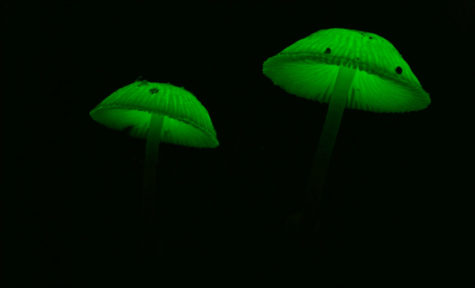
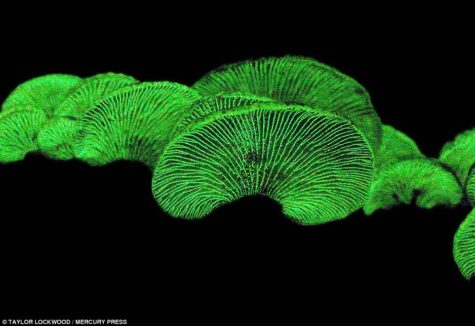
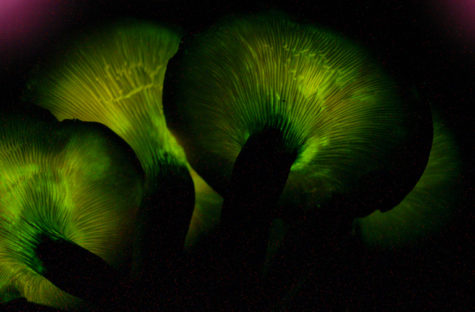
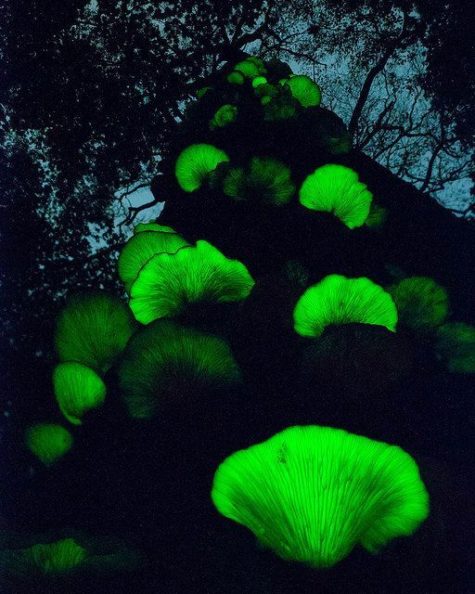
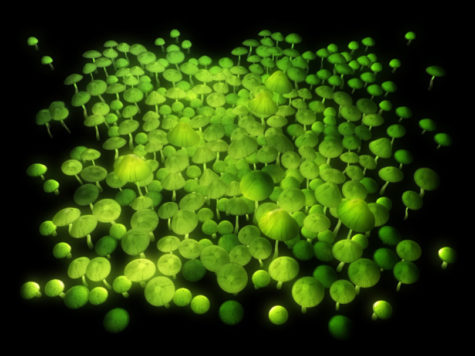



Leave a Reply